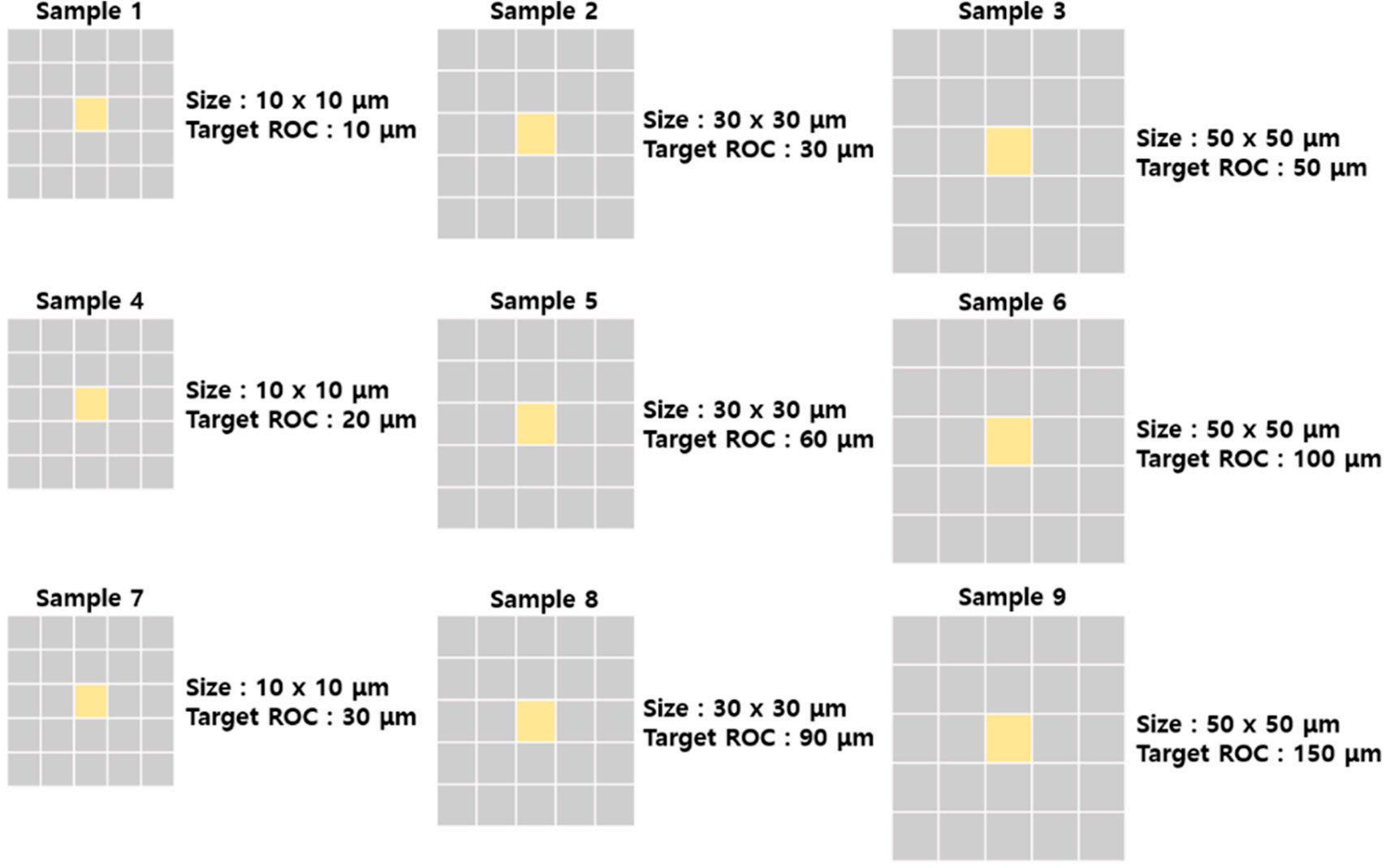Abstract:
Polymer shrinkage in nano-imprint lithography (NIL) is one of the critical issues that must be considered in order to produce a quality product. Especially, this condition should be considered during the manufacture of optical elements, because micro/nano-structured optical elements should be controlled to fifit the desired shape in order to achieve the intended optical performance. In this paper, during NIL, we characterized the shrinkage of polymeric resin on micro lens array (MLA), which is one of the representative micro/nano-structured optical elements. The curvature shape and optical performance of MLA were measured to check the shrinkage tendency during the process. The master mold of MLA was generated by the two-photon polymerization (2PP) additive manufacturing method, and the tested samples were replicated from the master mold with NIL. Several types of resin were adjusted to prepare the specimens, and the shrinkage effffects in each case were compared. The shrinkage showed difffferent trends based on the NIL materials and MLA shapes. These characterizations can be applied to compensate for the MLA design, and the desired performance of MLA products can be achieved with a corrected master mold.
Introduction
Nano-imprint lithography (NIL) is an advanced lithographic technology for micro/nano devices [1–5]. NIL is well known for its applicable adjusted flflexibility in MEMs electronics, biological applications, and polymer patterning [6–12]. The NIL process can achieve resolutions beyond the limits of light diffffraction or scattering because it induces direct contact with the resistance for mechanical deformation of the material. Numerous technologies, such as roll-to-roll NIL, are considered simple and useful for mass production; thus, not only academia but also industries are attempting to actively apply NIL [13–17]. Although it can be applied to replicate fifine patterns, NIL presents challenges, such as master durability, defects by contamination, large fabrication area, and shrinkage, that must be solved for its robust use. Thermosetting polymers and photopolymers commonly used in NIL processes are irreversibly hardened from their viscous resin state by heat or ultraviolet radiation. During the curing, monomer molecules are converted into a cross-linked polymer network, replacing van der Waals spaces between monomers with smaller covalent bond spaces. Resistance to polymerization shrinkage due to cross-linking by thermal or ultraviolet (UV) curing needs to be considered for precise manufacturing [18,19]. Existing studies on NIL resistance to shrinkage showed that shrinkage can reach up to 20% depending on the mold pattern size [20,21]. Such an amount of shrinkage affffects the fifinal performance of applications such as optical elements.
Micro-lens array (MLA) is one of the most important optical components in various applications, such as data storage [22], optical communication [23], imaging [24,25], illumination [26,27], and display systems [28]. In comparison with other optical elements, such as diffffractive optical elements, MLA shows higher effiffifficiency and reliability for challenging applications, such as laser homogenization in lithography illumination systems. Each lenslet in MLA plays a role in diffffusing the source light with a specifific divergence angle. MLA requires a tight discrepancy between the designed and manufactured geometric parameters, such as radius of curvature (ROC), size, and aspherical coeffiffifficients, to realize the intended optical performance at the design step. During fabrication of MLA with NIL, surface shape variation should be checked and controlled to secure the design parameters in fabricated samples. The two-photon polymerization (2PP) technique, which uses a focused femtosecond pulse laser to induce polymerization of photopolymers in small voxels, has recently become a promising additive manufacturing method [29–31]. The rapid development of 3D printing technology using the 2PP principle has made it possible to fabricate three-dimensional shapes with nanoscale precision [32,33]. It also made it possible to quickly and easily fabricate various types of MLA with high precision. To effiffifficiently mass-produce the 3D-printed MLAs, attempts to utilize the NIL technology for successive replication are drawing attention. However, the replicated MLAs often have difffferent optical performance from the initial design because of the polymerization shrinkage accumulated in each replication process. In this paper, we characterize the amount of shrinkage based on the types of resin and NIL steps with experimental results. We also present the measurement results obtained with a scanning electron microscope, 3D profifiler, and white interferometer, and the optical performance of the fifinal MLA products was measured by using a CCD camera. In addition, we suggest the shrinkage compensation method to obtain the desired performance of MLA and show the improved optical performance of the modifified MLA.

With the fourth fabricated mold replica, NIL was performed with difffferent UV curable polymer resins (GPR-402 from MCnet, OM 625 from Delo, Ormocomp and OrmoClear FX from Kayaku). Difffferences were observed in the basic characteristics of each resin. In terms of shrinkage, OM 625 showed a good result, and GPR-402 was the most outstanding in terms of process convenience and stability. We measured the surface topology of samples in each step as follows: (1) master mold, (2) fifirst replica (PDMS), (3) second replica (single mold), (4) third replica (WSM), (5) fourth replica (WSM), and (6) fifinal sample. A total of 36 measured data for the four difffferent polymers were compared to characterize polymer shrinkage during NIL.
上一篇: GaAs 和GaN 的湿热氧化
下一篇: 磷化铟衬底的晶体生长和晶片加工